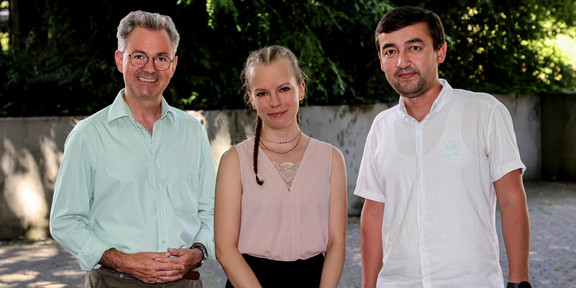TU Physicists Model the Behaviour of Antiferromagnets
- News
- Research

The publication is the result of Katrin Bolsmann's Master's thesis. In it, the physicist dealt with antiferromagnets, which are playing an increasingly important role in information processing. "With antiferromagnetic storage media, more storage capacity could be realised in a smaller space in the future and information could be stored much faster than before," says Bolsmann. Her model is based on the "Schwinger boson molecular field theory", which can be used to describe how the spins reverse in the course of a magnetic switching process. With the help of the newly developed model, predictions can be made about an activation energy that is required for spin reversal in anisotropic antiferromagnets. This effect can also be calculated as a function of temperature, which was carried out by Dr. Asliddin Khudoyberdiev.
The calculations have shown, for example, that the magnetisation can be reversed in the isotropic model without loss of coherence and for arbitrarily weak fields. In the anisotropic model, however, an activation energy must be overcome, which in turn leads to a loss of coherence. In addition, it can be seen that as the temperature increases, the required activation energy steadily decreases until the temperature is finally reached above which an antiferromagnetic substance becomes non-magnetic.
"The theoretical model provides a good quantitative prediction for experimental investigations of the phenomena," says Prof. Uhrig. Thus, complicated lattice structures in two dimensions with different magnetic orders could be studied in the future. In addition, three-dimensional layered structures, which are currently attracting a lot of attention as van der Waals materials, can also be described. The application of time-dependent magnetic fields, as they occur in terahertz radiation, is another approach to enable switching even below the calculated threshold fields.
Contact for queries:









